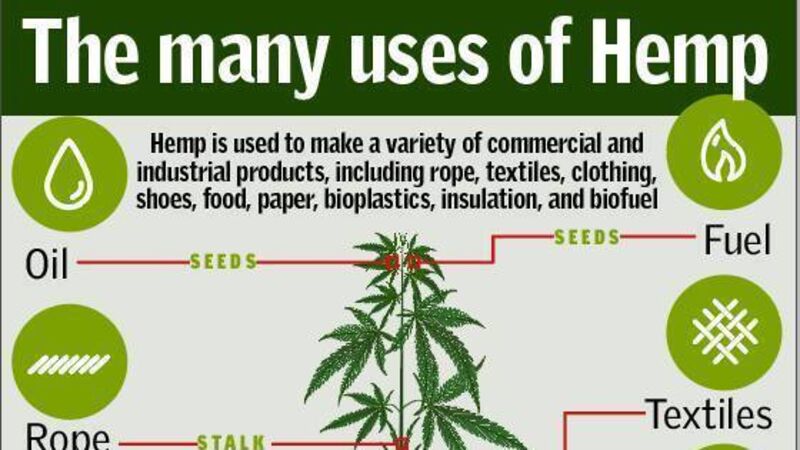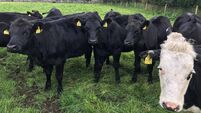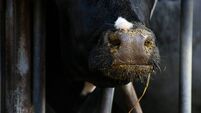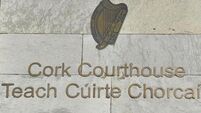Hemp is a “high-value crop”, is very pest resistant, low maintenance to grow, and has over 50,000 different product applications.
And yet, one of the biggest things holding it back is the “stigma” that surrounds it.
Assistant professor at University College Dublin’s School of Biology and Environmental Science Susanne Schilling has a background in plant genetics and evolution.
Since 2019, she has been working on hemp, and describes herself as being “relatively recent to the topic, just because it’s really a newly-emerging crop”.
Knowledge is lacking in this area, Ms Schilling explained, unlike for the “well-studied crops such as rice, wheat, where we have lots of genomic information”.
“We know a lot about the different plants and the compounds, how they grow when they flower, but we don’t know all of this for hemp,” she said.
“And that is what our group is working on at the moment.”
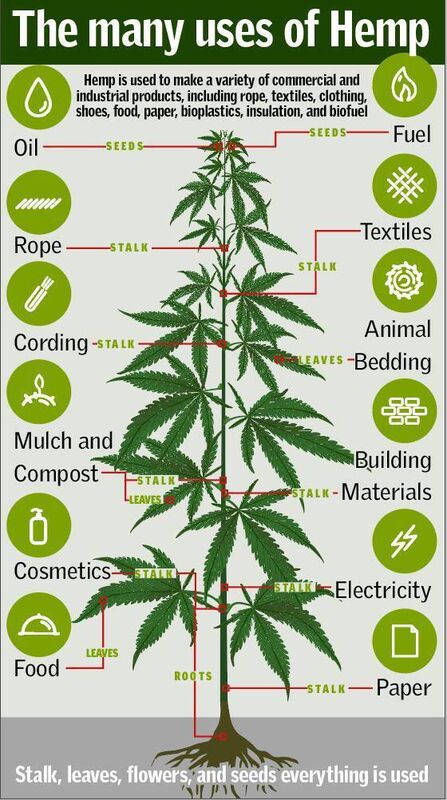
Earlier this month, Taoiseach Micheál Martin and Minister for Further and Higher Education, Research, Innovation and Science Simon Harris awarded €37.3m to 62 collaborative research projects between academics and institutions in Ireland and Northern Ireland under the first funding call from the North-South Research Programme.
One such project to receive funding is ÉIREhemp — an “all-island approach to sustainable high-value functional polysaccharides from low-value agricultural hemp waste products”.
The project will be led by Ms Schilling in collaboration with Professor Brian Green of the School of Biological Sciences, Queen’s University Belfast.
The ÉIREhemp project will explore currently underutilised and undervalued aspects of the hemp plant.
Hemp is a multipurpose high-value crop with a continuously growing market, supplying medicinal products from its flowers, clothing from its fibre, and food alternatives from its seeds.
ÉIREhemp proposes that hemp could be a key crop in achieving a “balanced and sustainable green agriculture on the Island of Ireland”.
Currently, not all parts of the hemp plant are used or understood.
According to Ms Schilling, “I’d say there are two definitions” for hemp — the biological, and the legal.
“The species it’s from, the Latin name for the species is Cannabis sativa,” she explained.
“That species can be then divided in different ways.
“For example, if you look into relationships between the plants or similarities in, say, plant architecture, some of those plants, especially hemp plants, are taller, they are grown for fibre, and not so much for the flower.
“Although I have to say one of the main cultivars that is grown in Ireland is grown for its seeds because from the seeds you can get hemp oil, and so on.”
Hemp is one “distinct group” within this plant species. And then, “on the other side, would be marijuana”.
“These plants, they have a distinct other phenotype; they have distinct traits from the hemp plant, hemp tends to be taller, it tends to have less dense flowers.
“Marijuana is basically known for its really dense flowers that contain tetrahydrocannabinol [THC].
“And it has smaller growth, it’s usually a bushier plant. Hemp is quite different.
“But still, these would be considered the same species and you can still cross them and get fertile offspring off of this cross.
“So it’s all one species, but then you have distinctive groups.”
Those are the biological definitions; whereas when it comes to the legal definitions, “we would classify everything that contains THC above a low threshold level of 0.3% of dried flower mass usually would be considered marijuana”.
“Whereas everything that is below this threshold, it might contain other cannabinoids like for example, cannabidiol [CBD] that is just over the counter you can buy because it doesn’t have the psychotropic effects,” Ms Schilling said.
Essentially, industrial hemp is very similar to cannabis, but it does not have the narcotic effects of the active ingredient of THC.
It is noted in a factsheet by Teagasc that currently, only cultivars with less than 0.2% THC may be grown for fibre and seed oil production in the EU.
“The Misuse of Drugs Acts 1977 to 2016 gives effect in Ireland to the international conventions on narcotic and psychotropic substances, including the 1961 Single Convention on Narcotic Drugs,” Barry Caslin, rural development specialist with Teagasc said.
“Cannabis derivatives, which include THC, are controlled by this framework.
Ms Schilling said that from speaking to farmers in Ireland, the main cultivars, or the main strain of hemp that they are growing, is called Finola – they are “smaller plants, but not as tall as fibre hemp”.
“Fibre hemp plant can easily grow three, four metres high in the field,” Ms Schilling continued.
“So it’s really towering over you.
“So they have a huge potential, for example, because it grows so fast they have huge potential for carbon capturing.”
Ms Schilling said the plant is “really resistant to drought”, so if a “relatively warm, dry year” occurs, other crops might suffer, but the hemp will still go strong.
“What it doesn’t like is super long, wet periods, which can happen in some summers,” she added.
“Other than that, I think it is relatively resistant to pests, to all kinds of insects.
“The only problem you have is when the seeds are already ripening and you get a lot of rain, say in late summer, you might run into problems with mold.”
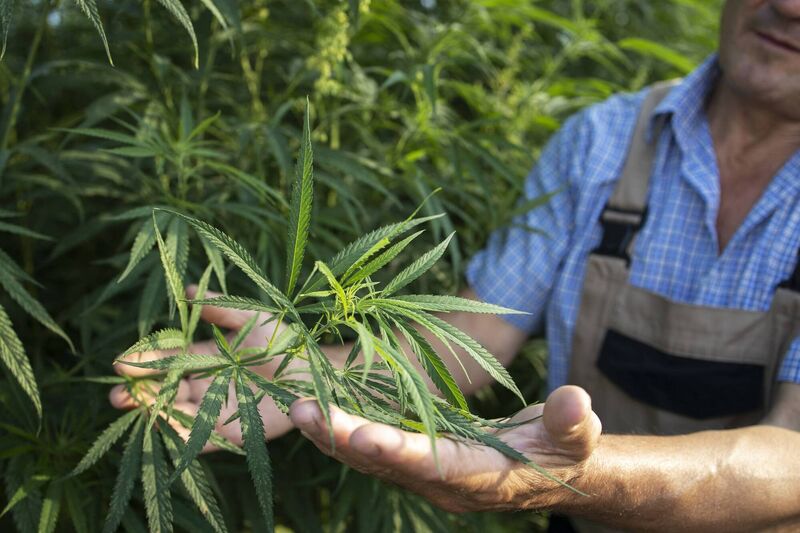
And because hemp grows so fast, “you also don’t have to apply a lot of herbicides”.
A lot of the cultivars being used in Ireland are coming out of France.
In Europe, France is leading in terms of hemp cultivation.
“I think the climate is better suited for some cultivars, but actually the Finola doesn’t really care about day length, it’s actually from Finland and that is actually quite well adapted to be grown also in Ireland.”
Not only in Ireland, but “even worldwide”, the research on breeding is “lagging”.
“There is a huge potential of breeding and generating strains that are particularly well adapted to certain climate conditions and flowering time requirements,” Ms Schilling said.
“I think one problem is really that you have to sow the crop quite late.
“So one could look into more cold-resistant strains.
“I think there’s a lot of potential to actually adapt it for Irish agriculture.”
Hemp is a “really high-value crop”, and growing it aligns with climate action efforts, Ms Schilling said.
“If we want to think about a sustainable agriculture and economy, we have to take into account that we have to replace basically our conventional materials that we’re using, and replace them with more sustainable options,” she said.
And Ms Schilling said that from farmers she has spoken with, if they can sell the product, they are “more than happy” to grow it.
“I think for the farmer, the incentive would be first of all, making it easier to grow these low THC cultivars, and then to finding a market that is worth the effort,” she said.
“If you can sell really high-value products it’s going to be worth it.”
The Department of Agriculture, Food and the Marine is currently conducting a consultation, in line with a commitment given in the current Programme for Government, to “fully explore the potential for growing fibre crops such as hemp, considering whether these crops have a viable market”.
The consultation is being conducted by the department with input from relevant stakeholders to establish if there is financial viability of crops, including hemp as a fibre source.
The evaluation of the submissions is near completion and a draft report is being prepared and once finalised, it will be published in due course, a spokesman for the department said.
According to the department, it is not the purpose of this consultation to deal with legislative issues that come under the Misuse of Drugs legislation or indeed hemp-derived food products which do not primarily come under the remit of the department.
A total of 78 licences to cultivate hemp for fibre use were issued in Ireland in 2021.
The Department of Health issues the licences for the cultivation of hemp in Ireland.
The Health Products Regulatory Authority (HPRA) processes the applications received for such licences, on behalf of this department.
The applications are assessed against what is legally permitted under the current Misuse of Drugs legislative framework.
Hemp is a plant of the genus Cannabis sativa; and cannabis is a schedule 1 controlled substance under the Misuse of Drugs Acts 1977-2016 and orders and regulations thereunder, a spokesperson for the Department of Health explained.
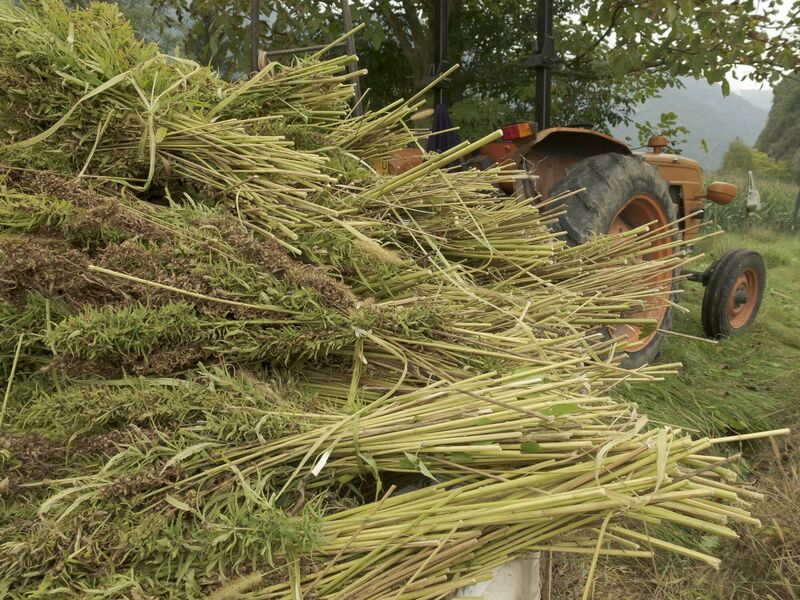
Under the Misuse of Drugs Acts, cannabis means any part of the plant of the genus cannabis but excludes the following after separation from the rest of the plant: the mature stalk and fibre produced from it; and the seeds.
Any other part of the plant not explicitly excluded under the act is cannabis for the purposes of the act.
As such, only the seed, mature stalk or fibre of the hemp plant may legally be supplied onwards.
As a consequence, other parts of the plant, including the leaves and the flower, may not be supplied onwards and must be destroyed.
Food businesses offering or seeking to offer hemp-based foods for sale in Ireland have an obligation to ensure their products are fully compliant with a range of applicable food safety legislation, which is enforced in Ireland by the Food Safety Authority of Ireland and its official agencies, and with the provisions of the Misuse of Drugs Acts 1977-2016 and orders and regulations thereunder.
Those who wish to grow hemp must apply on an annual basis for a licence.
The HPRA said that it received 91 applications in 2021 for a licence to cultivate hemp for fibre use, while 78 licences were issued.
Of the 91 applications received, 13 were not successful as the applicant did not respond with information that was requested for the application to be progressed for consideration by the Department of Health.
The county where the most licences were issued in 2021 was Cork; 10 licences were issued.
Seven licences were issued each in Mayo and Meath, while six were issued in counties Kerry, Monaghan, and Wicklow.
Kate Carmody, chairwoman of Hemp Cooperative Ireland, and organic dairy farmer, told a meeting of the Oireachtas joint committee on agriculture, food and the marine recently that from her own experience “there is no trouble getting a licence if one is honest on the form and wants to use hemp for fibre”.
“I use it as a rotational crop in my farming system,” she said. “I used it for bedding for cattle. I use the seed when I harvest it to feed pigs.”
Ms Carmody said growing hemp is a “no-brainer” for the farming community.
“I live in north Kerry and before the pandemic, I had a queue of farmers at my kitchen door every week.
“They want to bring their children home from all over the world to farm their land but they want them to make money. They do not want them to lose.
“I live in a drained peatland area which is getting wetter and harder to farm.”
Ms Carmody said that a “great starting point for the industry” would be that “anything on the EU’s approved list should not require a licence”.
She said she does not want farmers having to apply for a licence because “industrial hemp has very little CBD or THC if it is being grown for fibre”.
Hemp is included as an eligible crop under the Basic Payment Scheme implemented by the Department of Agriculture, Food, and the Marine.
“Any farmer should be allowed to grow hemp and put it on their basic payment form; end of story,” Ms Carmody said. “The HPRA could go out and check the crops to ensure we are not breaking the law.”
Declan Darcy, treasurer of Hemp Cooperative Ireland said the cooperative is hearing regularly from farmers “all of whom are looking for another option”.
“Every day we are getting emails from farmers looking for information about growing hemp. If the harvesting, baling, drying, and cleaning equipment was there, farmers would jump on board, especially the younger farmers,” he said.
